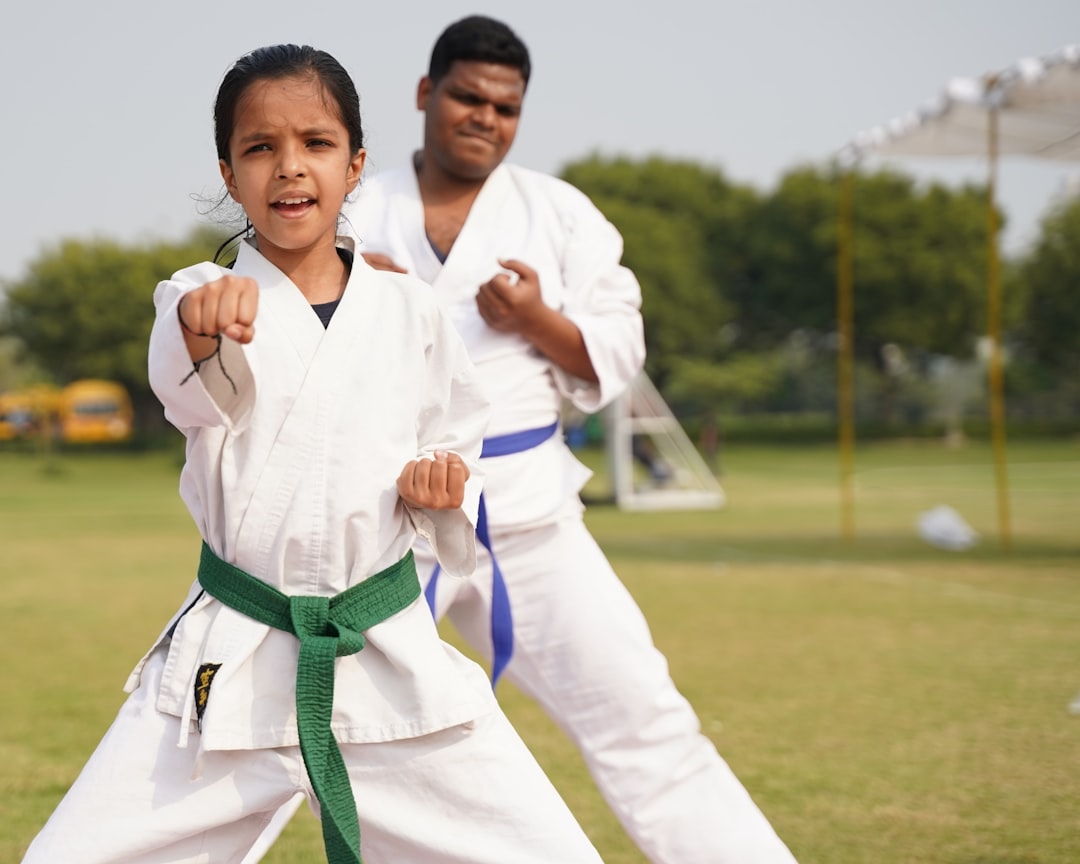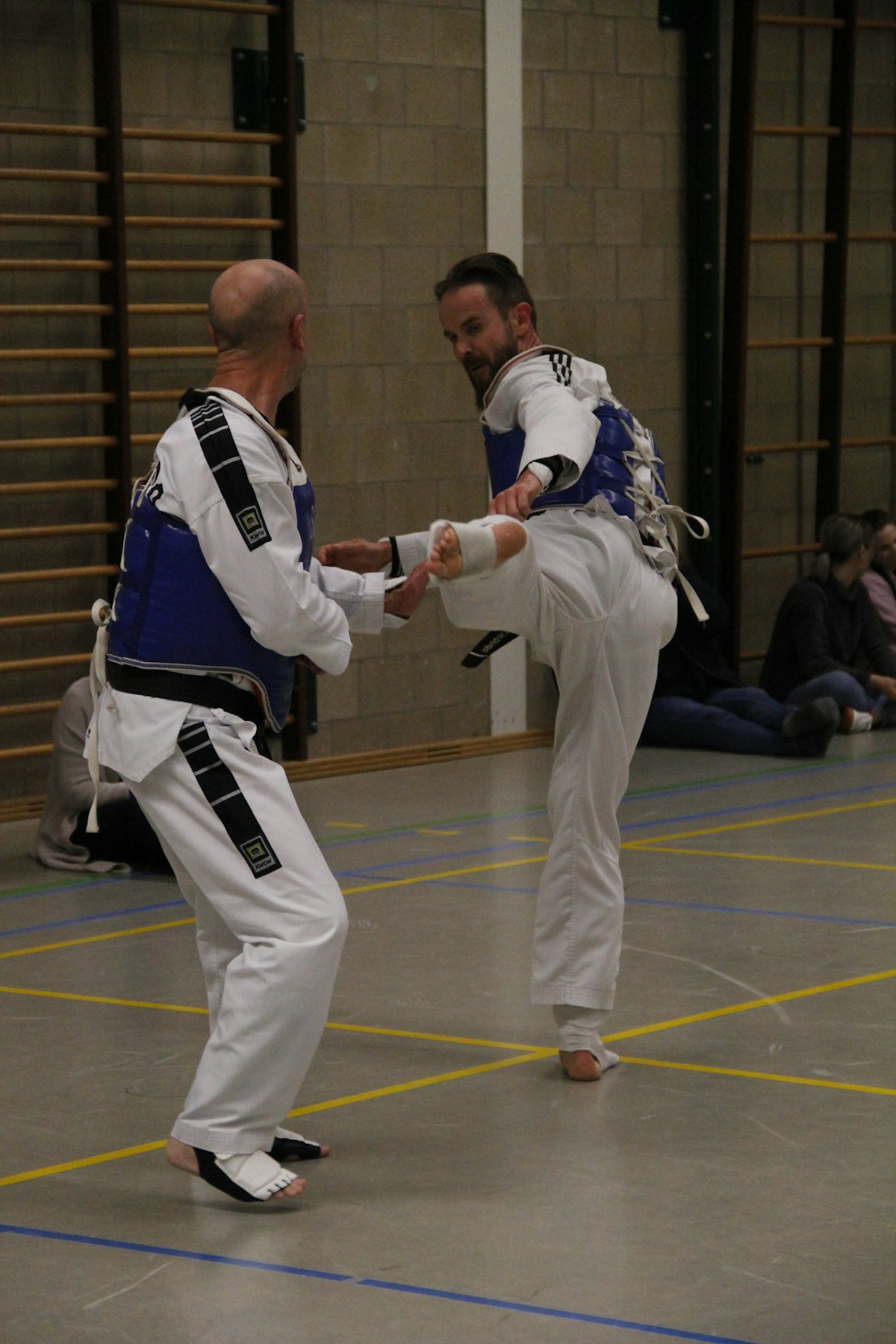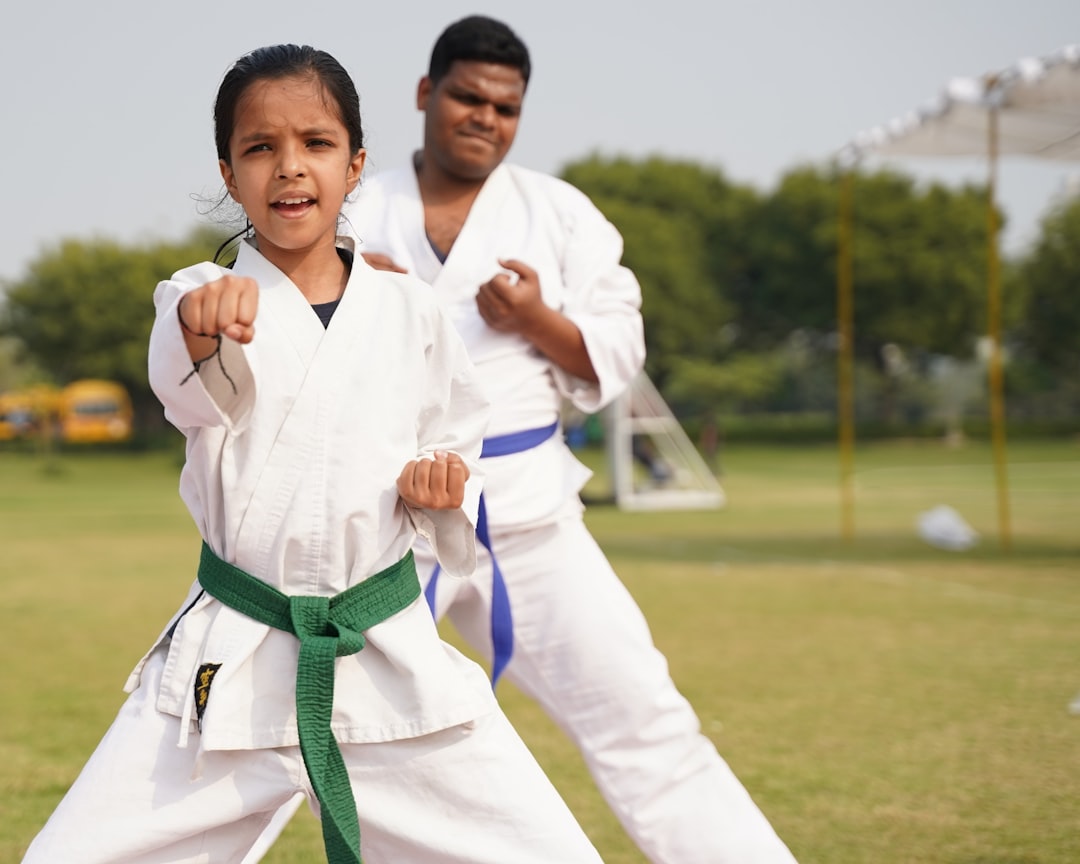Creating an effective home karate training space requires careful consideration of your environment and equipment. Ensure you have a spacious area free of obstructions, with a shock-absorbent surface like martial arts mats to practice safely. Wear comfortable and authentic karate attire, such as a gi, for optimal performance. Advanced training can be enhanced by adding a heavy bag, Makiwara for striking practice, and mirrors for form checking. Keep your gear organized and accessible, and stay hydrated with a water cooler or personal bottle. Organization is crucial, as is the right lighting and noise control for focus. A karate outfit tailored for movement will aid in injury prevention and performance enhancement. In summary, transform your home into a dedicated karate dojo by focusing on space, safety, equipment, attire, and organization to support your practice and progress in mastering karate.
Discover the art of Shotokan, Kyokushin, or any karate style right from the comfort of your home. In this comprehensive guide, we’ll navigate you through setting up a dedicated training space, selecting the appropriate karate outfit for safety and comfort, and equipping yourself with essential tools to elevate your practice. Whether you’re a beginner or an experienced practitioner, learn how to master stances, perfect punches and kicks, and safely execute breakfalls. As you advance, explore sparring techniques, self-defense tactics, and build mental resilience. Stay motivated with virtual communities, online guidance, and personalized feedback to ensure your home karate training is as impactful as if you were in a dojo. Embark on this journey to not only strengthen your body but also cultivate the discipline and focus that are at the heart of martial arts.
- Setting Up Your Home Karate Training Space: Essentials and Layout Considerations
- – Identifying a Suitable Area in Your Home
- – Karate Outfit NAME: The Importance of Proper Attire for Comfort and Safety
- – Recommended Equipment for Effective Home Training: Mats, Targets, and More
- – Organizing Your Space for Maximum Efficiency and Focus
Setting Up Your Home Karate Training Space: Essentials and Layout Considerations

When setting up your home karate training space, selecting the appropriate karate outfit, such as a gi or do-gi, is essential for both comfort and authenticity. A spacious area free from obstructions will allow you to execute techniques safely and effectively. Ensure the surface you train on is forgiving; mats designed for martial arts practice can absorb impact and prevent injury. The layout should facilitate movement, with enough room to practice kata and basic movements without worrying about running into furniture or walls. Adequate lighting is crucial to see your movements clearly and avoid accidents. Additionally, consider the location’s quietness; a secluded space will minimize distractions and enable you to concentrate fully on your training sessions.
Positioning your equipment thoughtfully can enhance your practice. A wall-mounted heavy bag or a Makiwara for striking practice are excellent investments for honing your punching power and stamina. Mirrors, if space permits, can help you check your form and ensure that your techniques are executed correctly. Ensure there is ample space around the bag and mirror to perform full-range movements without constraints. A small shelf or storage unit can keep your karate outfit and other essentials, like a focus mitt for drills with a partner, within easy reach. Hydration is also important, so a water cooler or bottle nearby is advisable. With these considerations in mind, your home will become a dedicated karate training space that supports your practice and promotes your growth in the art.
– Identifying a Suitable Area in Your Home

To effectively train karate at home, identifying a suitable area within your living space is paramount. Ideally, you’re looking for an open zone that allows for ample movement, free from obstructions like furniture or breakable items. Ensure this space can accommodate the necessary movements and has enough room for you to practice with a full range of motion, especially for techniques that require kicks and punches. The surface should be forgiving yet firm; a thick mat or a tatami-style flooring can mimic the feel of a dojo and cushion falls. When it comes to your attire, donning the appropriate karate outfit, such as a gi, will provide comfort and durability during practice, ensuring you’re dressed for success and safety. Is the area you’ve chosen spacious enough to execute full-body movements without hitting walls or furniture? Yes, as long as you have a clear perimeter of at least 5×5 meters, you can perform most karate kata and exercises. Does your home environment offer a surface that is both safe and supportive for the dynamic movements of karate practice? If you’ve laid down a suitable mat or chosen a tatami floor, then it will serve you well as you train. Remember to adjust the lighting to ensure visibility during all sessions, and consider the noise level to avoid disturbing household members or neighbors. With these elements in place, your home can transform into a personal karate dojo, ready for you to practice and refine your skills.
– Karate Outfit NAME: The Importance of Proper Attire for Comfort and Safety

When training karate at home, selecting the appropriate attire is crucial for both comfort and safety. A well-fitted karate outfit not only allows for a full range of motion but also protects you from potential injuries. Are you aware that the right karate outfit can significantly enhance your performance and prevent accidents caused by ill-fitting garments? Karate outfits are designed with both functionality and comfort in mind, featuring a snug fit to ensure that the fabric doesn’t interfere with your movements during practice. Do these outfits offer additional benefits beyond comfort and safety? Absolutely. They also help with temperature regulation, keeping you cool during intense workouts and providing a layer of protection against abrasions from training on various surfaces. When choosing your karate outfit, consider how the material stretches and fits around your joints, as this will affect your ability to execute techniques correctly and safely.
– Recommended Equipment for Effective Home Training: Mats, Targets, and More

To effectively practice karate at home, having the right equipment is crucial to simulate a dojo environment and ensure your training is both safe and productive. A high-quality karate mat, often referred to as a “dojo mat” or “karata tatami,” should be your first investment. These mats provide cushioning for your joints during exercises like stances and kicks, reducing the risk of injury. Additionally, they mark out the necessary training space, allowing you to practice kata and combinations with proper spacing. A sturdy kick shield or target dummy, known as a “makiwara” or “focus mitt,” is also beneficial for honing your striking techniques. It can be used to practice punches, kicks, and knee strikes, helping you to maintain the correct form and technique. A wall-mounted punching bag or a free-standing model can further complement your training by providing resistance and improving your power and stamina. Lastly, a set of karate gripping balls or “juggling nunchaku” for wrist strength and dexterity exercises completes the essential home training kit. These tools, combined with discipline and dedication, will enable you to train effectively at home and progress in your karate practice.
When selecting a karate outfit, known as a “keikogi,” consider one that is both comfortable and allows for full range of motion. A well-fitted keikogi not only supports your movements but also helps you to train with the correct posture. Alongside your gi, appropriate footwear, such as “karate dojo shoes” or “keikobu,” can protect your feet during practice and prevent slipping on your training mat. Remember, the right equipment not only facilitates your learning process but also enhances your overall karate experience at home.
– Organizing Your Space for Maximum Efficiency and Focus

When training karate at home, organizing your space effectively is crucial for maintaining efficiency and focus during your practice. Start by clearing a spacious area where you can move freely without obstruction. This ensures that you have enough room to execute kicks, blocks, and punches with precision. Next, consider the surface you’ll be training on; a soft mat is ideal as it will provide cushioning for your joints and reduce the risk of injury. What kind of mat should you choose for your karate practice? Opt for one that offers enough grip to prevent slipping while being dense enough to absorb impact.
In addition to the physical space, setting up your training environment with the appropriate equipment will enhance your experience. A mirror is beneficial for checking your form; it allows you to self-correct your stances and techniques. Additionally, having a wall clock or timer can help you keep track of your workout duration and intervals. Ensure your karate outfit, such as a traditional gi or comfortable training attire, is readily accessible so you can change into it immediately before starting your session. Is your chosen attire conducive to your practice? A well-fitting karate gi will not hinder your movements, enabling you to train effectively at home.
Karate training at home can be a rewarding and effective way to develop your skills and maintain a consistent practice. By setting up a dedicated space, selecting the right equipment, and ensuring you have the appropriate attire—like the essential Karate Outfit Name—you’re well-prepared for focused and efficient training. Remember to make the most of your available area, choose high-quality gear such as mats and targets, and keep your environment organized. With these guidelines in mind, you can enhance your karate practice from the comfort of your own home. Embrace the discipline of karate, and let your dedication and commitment to the art guide you towards achieving your martial arts goals.
